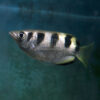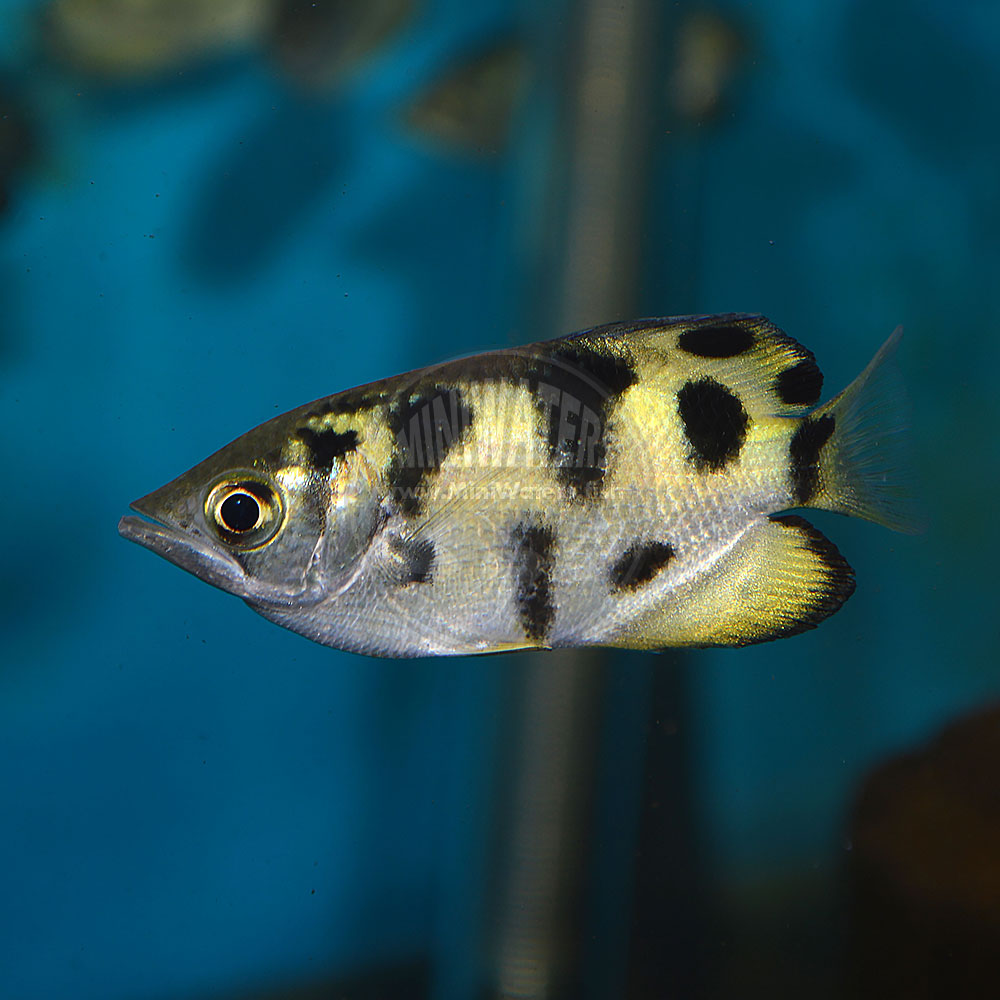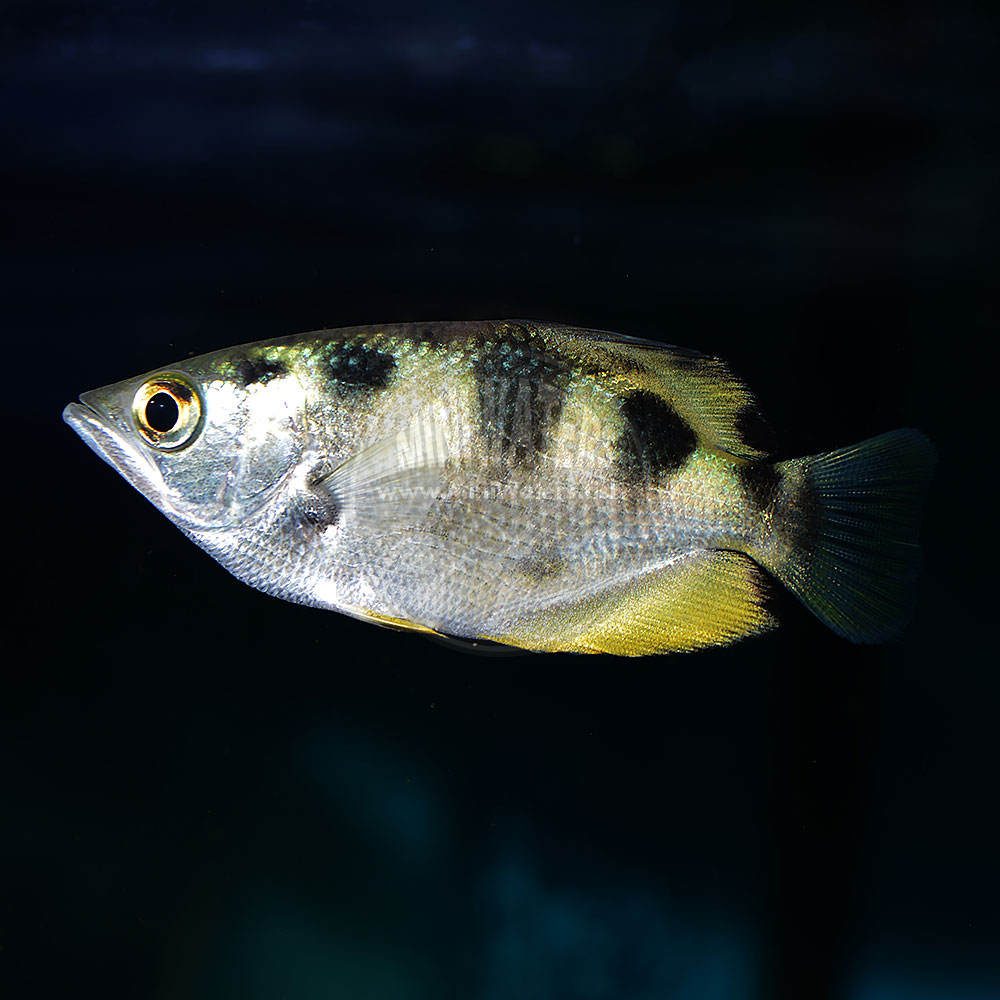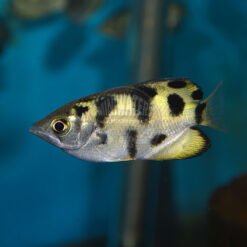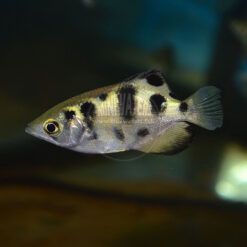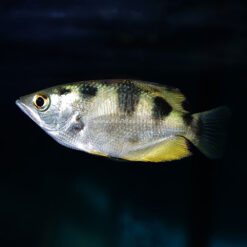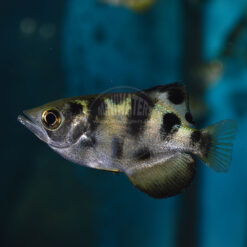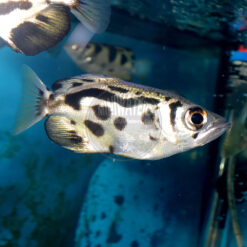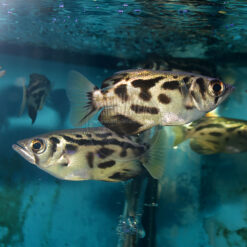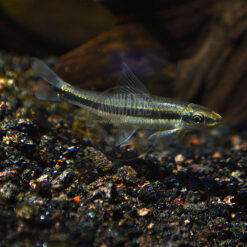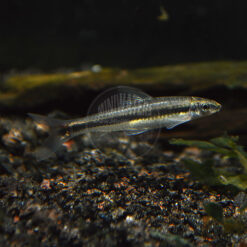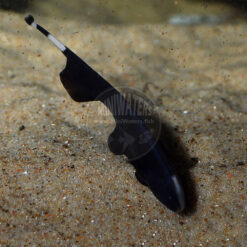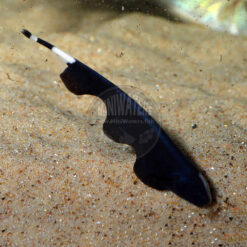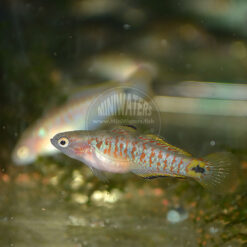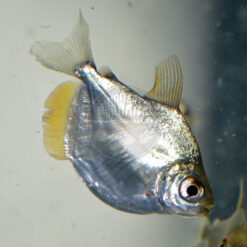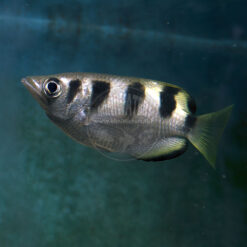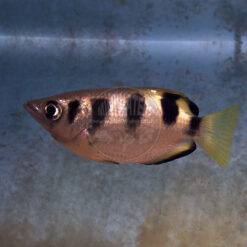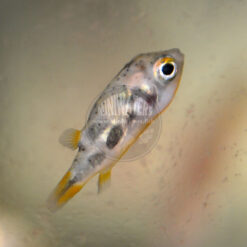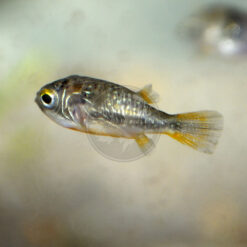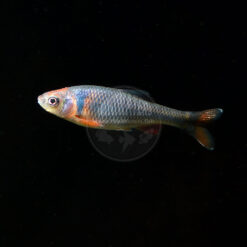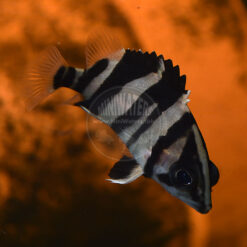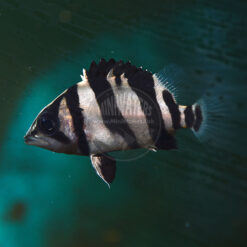Toxotes microlepis “Golden or Smallscale Archerfish”
$75.00 – $525.00
Long story short, the first time we received this as “Clouded Archers” we were baffled, but as time went on we were able to finally settled on the identification of this archerfish as Toxotes microlepis, the “Golden” or “Smallscale” Archer. While reportedly species found purely in freshwater, they routinely seemed to do better with a low level of salt, 1 T per gallon. By far, I believe this species does best in large groups of 6 or more.
Please note that if we are able to obtain these in the future, the price could be anywhere, cheaper or higher, so the prices listed below were based on what the last ones cost us, which was perhaps more than they should have.
Read below to learn more about these Archers, their care, and the difficulty behind the identification.


